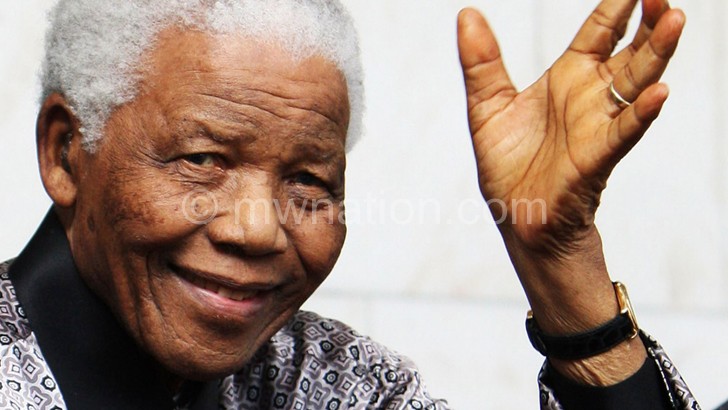The trial of Nelson Mandela
The autobiography of Nelson Mandela, who is affectionately known as Madiba, is titled Long Walk to Freedom. This long walk was not just of Mandela who spent 27 years in jail, but also that of the African National Congress (ANC) of which he was president until he retired as South African first black president in 1999.
The ANC is the oldest political party in Africa. It was founded in 1912 by Dr PixleyKaIsakaSeme but its first president was Dr John Dube. It was a party of black intellectuals who believed in peaceful negotiations with white leaders for racial equality.
The organisation that attracted the masses was the Industrial and Commercial Workers Union (ICU) founded by Clements Kadalie, a Nyasa or Malawian whose original home was Nkhata Bay. Kadalie was so charismatic, that up to the early 1950s he dominated the political and trade union leadership of South Africa, Books written by South Africans such as Jordan K. Ngubane and Heidi Holland testify to this.
Of the two organisations—the ANC and the ICU; the ANC proved—the ANC proved the more durable. The continued existence of the ICU depended on one man. When Kadalie died in East London in November 1951 after a short visit to Blantyre and Nkhata Bay, the ICU also died.
But he had left a legacy of mass protest defiance and willingness to be jailed to achieve the organisation objectives.
In 1944, Mandela joined the ANC, influenced by his life-long friend Walter Sisulu. He became chairman of the ANC Youth Wing. In 1948, the National Party, an Afrikaner (Boer) dominated party, won the general election. While there had been racial discrimination before now the National Party stiffened racism calling it Apartheid (apartness). The ANC realised that trying to solve South Africa’s problems using peaceful resolutions and petitions was worthless.
In 1952, the ANC organised passive resistance which it called Deviance Campaign. Men burnt the identification documents called passes which they were compelled to carry outside their homelands.
They defied all rules which segregated races. In thousands, men and women received jail sentences for these infringement to Africans, Asians and coloured.
In 1955 Professor Z. K. Mathews of Fort Hare University chaired an ANC meeting at which a memorandum was addressed to the President of South Africa Dr Malan demanding equal rights otherwise the ANC was to adopt unspecified measures to achieve racial equality.
In 1956, the police arrested hundreds of ANC leaders including Mandela and hiss teacher at Fort Hare, Professor Z. K. Mathews and put them on trial. The case lasted until 1961 when the judge acquitted them all.
The same year, Mandela co-founded a military wing of the ANC called Umkhonto we Sizwe (Spear of the Nation) whose slogan was ‘AmandlaNgawenthu: Power to Us”. In its manifesto, the Umkhonto wrote: “The time comes in the life of any nation when there remain two choices: submit or fight. That time has now come to South Africa. We will not submit and we have no choice but to hit back by all means within our power in defence of our people, our future and our freedom”.
Shortly after, Mandela and his partner in practice Oliver Tambo sneaked out of South Africa, travelled all over independent Africa canvassing for assistance. He left Tambo abroad to lead the ANC members who had emigrated there following the government banning of the party, He himself incognito sneaked back to South Africa.
On December 16 1961 Mandela led Umkhontoin sabotage activities. He was jailed for five years both for having travelled outside without a passport and sabotage activities.
While Mandela was serving his five years sentence, the police raided the Rivonia Farm where leading members of the ANC were arrested. Mandela was brought out of prison to stand trial with the rest of what was called the National High Command. Mandela was defended by a white man Abraham Fischer who was in sympathy with Africans. The judge dismissed the case as the state failed to bring convincing evidence.
There followed what was called The Second Major Prosecution with Fischer still defending the accused, Mandela received international support, Dr Dean Rusk, secretary of state of the United States of America and Mr R. A. Butler, Britain’s secretary of state appealed to the South African govenment not to sentence Mandela to death.
Mandela delivered a long speech in which he said, inter alia, “I did not plan it [sabotage] in a spirit of recklessness nor because that I have any love for violence. Basically, we fight against two features which are the hallmark of African life in South Africa: poverty and the lack of human dignity. I have cherished the ideal of a democratic and free society in which all persons live together in harmony with equal opportunities. It is an ideal for which I am prepared to die.”
In June 1964, Mandela was convicted with seven others and sentenced to life imprisonment.
In February 1990 ,President Frederick de Klerk released Mandela and from that time his ideal of a free society for all was realised. Four years later he became South Africa’s first black president. He initiated a policy of national reconciliation rather than vengeance.
To him, South Africa was the Rainbow Nation, with all colours contributing to its beauty.
Mandela must go in history as one of the greatest practitioners of the doctrine of forgiving your enemies that Jesus had preached.

